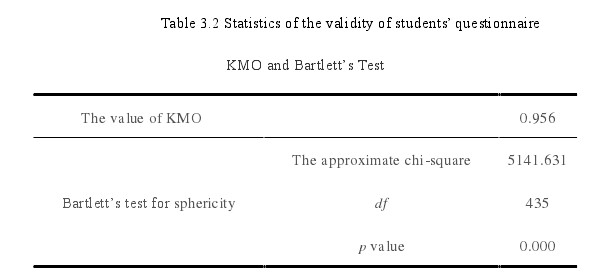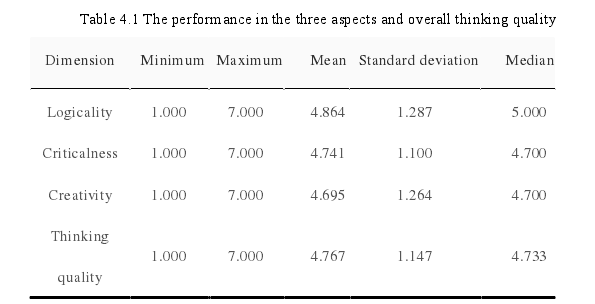Chapter 1 Introduction
1.1 Background of the Study
With the rapid development of the globalization and information in the 21st century, new challenges have been brought to education and talent training. It was in 1997 that the Organization for Economic Co-operation and Development came up with the concept of key competencies: “This is an ability that transcends knowledge and skills. It involves the use and mobilization of all the psychological and social resources to work out complicated problems.” Against this background, in 2014, Ministry of Education of People’s Republic of China proposed that a system of key competencies needed to be established and the new edition of Curriculum Standard for Senior High School was drafted. In 2018, English Curriculum Standard for Senior High School (2017) was officially issued, and the development of students’ key competencies was considered as the goal of English curriculum. The key competencies for English subject are made up of the following four parts: language competence, cultural awareness, thinking quality and learning ability. In terms of thinking quality, students are required to comb and summarize information, draw the inference about the logical relationship of information and use English for independent thinking and divergent thinking.
Thinking quality is the focus of mental representation and the essential ability of students. It is necessary to explore the connotation of excellent Chinese and foreign cultures through language-based learning activities, compare their similarities and differences, and discover and absorb cultural essence in order to learn language knowledge and cultural knowledge well. The activities that occurred during this process: analysis, judgment, and evaluation are all considered as thinking process, reflecting the quality of the learners’ thinking.
............................
1.2 Purposes of the Study
Questionnaires and interviews are applied in this study to find out the current situation of thinking quality cultivation in senior high schools. It attempts to investigate the current situation of thinking quality from the three dimensions of thinking quality, namely logicality, criticalness and creativity, gender difference in thinking quality and factors that affect the cultivation of thinking quality. The research attempts to provide students and teachers with feedbacks and results of the current situation of the cultivation of thinking quality in senior high schools. In addition, it is hoped to give possible constructive suggestions for the cultivation of thinking quality in English teaching.

Table 3.2 Statistics of the validity of students’ questionnaire KMO and Bartlett’s Test
................................
Chapter 2 Literature Review
2.1 Definitions of Key Concepts
2.1.1 Definition of Thinking
According to Lu (2016), thinking can be defined from broad and narrow sense. In a broad sense, thinking is the neural activity of an organism. All the organisms with a nervous system have the ability to think. In a narrow sense, thinking is the cognitive activity of the human nervous system. From a non-biological perspective, thinking is a high-level cognitive activity of human beings.
Lu (2016) claimed that from the perspective of educational psychology, thinking is the psychological behavior shown in the interaction between human nervous system and environment. From the perspective of consciousness, people’s thinking activities are divided into three categories: unconscious thinking, subconscious thinking, and conscious thinking. First, unconscious thinking refers to the thinking activities shown by the instinctive reaction of the human nervous system when it is affected by the outside world, such as avoiding danger. Second, subconscious thinking is defined as follows: it is the thinking activity that human nervous system shows when people do not actively carry out conscious behaviors and are affected by the outside world. A considerable part of it is the thinking activity caused by cultural genes. For example, people show sadness when they hear The Moon Over a Fountain. Third, conscious thinking: this is the active thinking of the human nervous system after being stimulated by the outside world. It is the main form of human thinking and the main field in which the quality of thinking can be improved. We usually talk about conscious thinking. Based on the abstractness of thinking, people’s conscious thinking can be divided into three types: intuitive action thinking, concrete image thinking and abstract logic thinking.
In this study, thinking is defined as the conscious thinking from the perspective of educational psychology. Because of the abstractness of thinking, the study will not further discuss and classify the conscious thinking, which is discussed by the psychologists. That is, thinking is the active thinking of the human nervous system after being stimulated by the outside world.
............................
2.2 Theoretical Basis
2.2.1 Theory of Interaction between Thinking and Language
Language has been widely studied by cognitive psychologists and psycholinguists for the following reasons: First, the development of language represents a unique abstract process. Second, the process of human thinking and problem solving is a processing process that requires the participation of language. Third, human understanding of the world is also influenced by language expression. Theories can be found from Chomsky’s theory of language acquisition to Skinner’s belief that language is acquired through continuous reinforcement and Bartlett’s anticipation of “the abstraction of linguistic thought”. Vygotsky (2010) argues that children’s thinking development is most obvious in the process of language development. He also believed that language and thought were inseparable: “The relationship between thought and speech is a living process. Thought is produced by words. A word without thought is a dead thing, and a thought is only a shadow if it is not reflected by the word. However, the connection between thought and speech is not realized or permanent. It occurs in the course of development, and the connection itself is evolving”. In Dewey’s opinion, “language is the tool of thinking”. Language itself is not the same as thought, but without language there can be no communication of thought. For thought itself, language is necessary. As for the “application of language in education”, Dewey believed that “education should transform language into a rational tool”, specifically, it should guide students’ language learning and make the language originally used as a social tool become a tool to spread knowledge and help thinking. Therefore, language and thinking have an inseparable relationship, and the development of language and the improvement of thinking ability complement each other. This paper studies the language teaching in senior high school to promote the improvement of students’ thinking quality.
......................................
3.1 Research Questions .................................. 21
3.2 Research Subjects.................................... 21
Chapter 4 Results and Discussion........................................ 29
4.1 Results and Discussions of Questionnaires ................................... 29
4.1.1 Results and Discussions of the Current Situation of Senior High School Students’ Thinking Quality in Logicality, Criticalness and Creativity ........................ 30
4.1.2 Results and Discussions of Gender Difference in Thinking Quality .. 38
Chapter 5 Conclusion ..................... 52
5.1 Major Findings of the Study .................................... 52
5.2 Pedagogical Implications ......................................... 56
Chapter 4 Results and Discussion
4.1 Results and Discussions of Questionnaires
In order to answer the first and second questions, quantitative results of questionnaires are presented. There are 30 item questions in the questionnaire all together and they include three aspects--- logicality, criticalness and creativity of thinking quality. The results and discussions of questionnaires are presented also in accordance with the three aspects in the following part.
4.1.1 Results and Discussions of the Current Situation of Senior High School Students’ Thinking Quality in Logicality, Criticalness and Creativity
There are totally 240 students in Senior Two, including 6 classes. Every student was informed to fill out the questionnaire. In total, there are 214 valid questionnaires collected. First of all, we will start from the general current situation and then details of each aspect will be analyzed.

Table 4.1 The performance in the three aspects and overall thinking quality
Chapter 5 Conclusion
5.1 Major Findings of the Study
On the grounds of the results and analysis of questionnaire and interview, major findings of the current situation of senior high school students’ thinking quality cultivation in English teaching can be concluded to answer the research questions.
After carefully analyzing the survey results of the previous chapter, this part analyzes and summarizes the findings of the cultivation of students’ thinking quality in senior high schools’ English teaching, and deeply analyzes the main affecting factors.
Research Question 1: What is the current situation of senior high school students’ thinking quality in logicality, criticalness and creativity?
Through the analysis of the results of questionnaires and interviews with teachers and students, it is found that the quality of thinking of high school students is still at an intermediate level and the students’ advanced thinking ability is not really radiated. The level and current situation of thinking quality is not satisfactory enough, and more is still confined to language knowledge learning. Students perform better in logicality, which means that they can understand concepts well, make judgements and do logical nference and reasoning. But students are not confident with the answers to the items which assess their criticalness. Their criticalness and creativity in thinking so these two aspects are still in a lower level.
From the students’ questionnaire, it can be clearly found that students are not good at asking teachers for help in the English learning, and there is not enough active interaction with teachers. When analyzing and considering problems, students are inclined to follow others’ views and the comprehensive ability to analyze and solve problems is not high. Under the authority of standard answers, students always doubt about themselves. In learning, they tend to be told answers or solutions directly by the teacher. In addition, students’ ability to think independently is not enough because their laziness. They rely too much on the teacher and lack patience in thinking about questions. What’s more, they get answers in a hurry because they believe that teachers will always give answers. When learning language, students are afraid of questioning and tend to show agreements to others’ opinions. They are mentally inert, unwilling to think more and lack of initiative in learning, which seriously hinders development of thinking quality.
reference(omitted)
